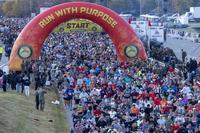When learning the military swimming, treading and swim/dive skills used by special ops, divers, and rescue swimmers alike, you must first have a solid foundation in water competency techniques. Yes, there is a conditioning element unique to swimming and treading, but the primary focus should be learning proper technique first. Good technique will help you progress much faster as you prepare for the many tactical maritime events in your future.
Here is a question from a young man seeking to master the fitness test as he works toward acceptance into the Navy Special Warfare, Special Ops (EOD/Diver) and Rescue Swimmer programs.
Stew, I am working on my technique for the Combat Side Stroke (CSS) and was wondering when I should start practicing my weak side. Should I practice them equally with and without fins while I am working to fine-tune my technique and get into swimming shape? Thanks, Jamie
Jamie, great question. The combat swimmer (or side) stroke, or CSS, is a swimming stroke used by the United States Navy SEAL, Explosive Ordnance Disposal, Diver and SWCC units. The CSS is tested with the Navy Physical Screening Test (PST) and is designed to help swimmers move through the water quickly, stealthily and efficiently.
The full test is 500 yards of swimming with no fins, push-ups, sit-ups, pull-ups and a 1.5-mile run. This is a test that assesses whether you are eligible to be accepted into the training programs.
To answer your question, you should start practicing the weak side once you have mastered the technique on your strong side, since it will be easier to mirror-image the stroke this way.
Think of the CSS this way: The CSS is a modified version of the freestyle stroke, breaststroke and the side stroke. It is characterized by an underwater arm recovery (like the breaststroke), a strong kick (like the breaststroke or elementary side stroke), and a powerful top arm pull and breath (like freestyle).
Remember we call the CSS a "modified side stroke," because you are on your side and therefore will have two sides (a strong and weak side), like the dominant and nondominant arm when throwing a ball.
Here is the sequence and timing of the stroke:
Pull your top arm (the one closest to the surface) and turn to breathe.
Do this like you would for a normal freestyle stroke with a turn of the head to breathe during this pull and turn phase of the stroke.
Bottom arm pull and inhale.
You inhale during a short breaststroke-like stroke (breaststroke scull) with the bottom arm.
Kick and tight arm recovery
You need a strong kick to generate the power necessary to swim at high speeds. You can use a breaststroke kick or a scissor kick (without fins) for this stroke. Recover the arms from the hips to the overhead streamline glide position, keeping the arms tight to your body to reduce drag.
TIP: Most land athletes will have a better scissor kick, and swimmers will have a much stronger breaststroke kick. Consider that when choosing the kick to use.
Glide
The glide phase is important as you work to make this an efficient stroke. A strong kick and glide position should yield a two- to three-second glide and maintain about a yard-per-second pace.
TIP: Many people over-glide and lose momentum. Some will under-glide and waste momentum. Usually, the two- to three-second mark hits the sweet spot in the middle of under-/over-gliding.
Repeat
From the glide position, the stroke starts over again with the top arm pull.
You must do this stroke the same way, regardless of side. It will feel awkward when you try the "weak" side the first few times, but you must practice it, especially when wearing fins.
Count the number of strokes it takes to get across a pool in the full sequence above and time it. Do this on both sides, and you can see for yourself how your weak side is working, compared to your strong side.
To master the technique you need to make sure you have a strong and powerful kick. This will help you move through the water quickly and with ease.
Second, you need to keep your arms close to your body and tuck your chin to ensure you have a streamlined silhouette. This will help you cut through the water with less resistance.
Finally, you need to make sure you are breathing steadily and rhythmically to avoid getting fatigued.
If you can keep these things in mind, you will be well on your way to mastering the combat swimmer stroke. It may not matter that much when swimming 500 yards with a mix of strong and weak side since the test is usually 8-10 minutes long.
When it matters the most is when the swims are 60-90 minutes or longer with fins in the ocean. You will have to change sides, kicks and arm pulls just to balance out tired muscles. So practice strong and weak sides. You may need it during a test without fins one day, but you will definitely need it when wearing fins on long ocean swims.
Related swimming articles:
Popular Swimming Pool Workouts
-- Stew Smith is a former Navy SEAL and fitness author certified as a Strength and Conditioning Specialist (CSCS) with the National Strength and Conditioning Association. Visit his Fitness eBook store if you're looking to start a workout program to create a healthy lifestyle. Send your fitness questions to stew@stewsmith.com.
Want to Learn More About Military Life?
Whether you're thinking of joining the military, looking for fitness and basic training tips, or keeping up with military life and benefits, Military.com has you covered. Subscribe to Military.com to have military news, updates and resources delivered directly to your inbox.



















